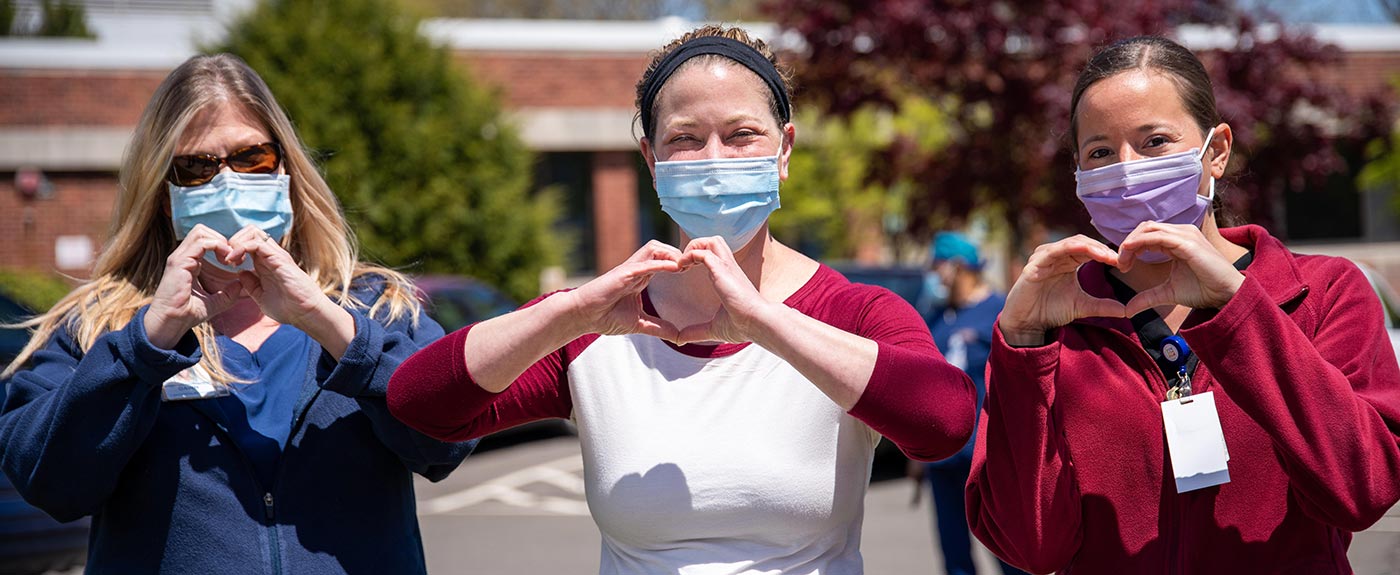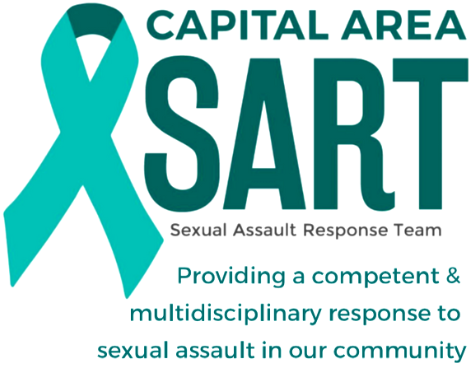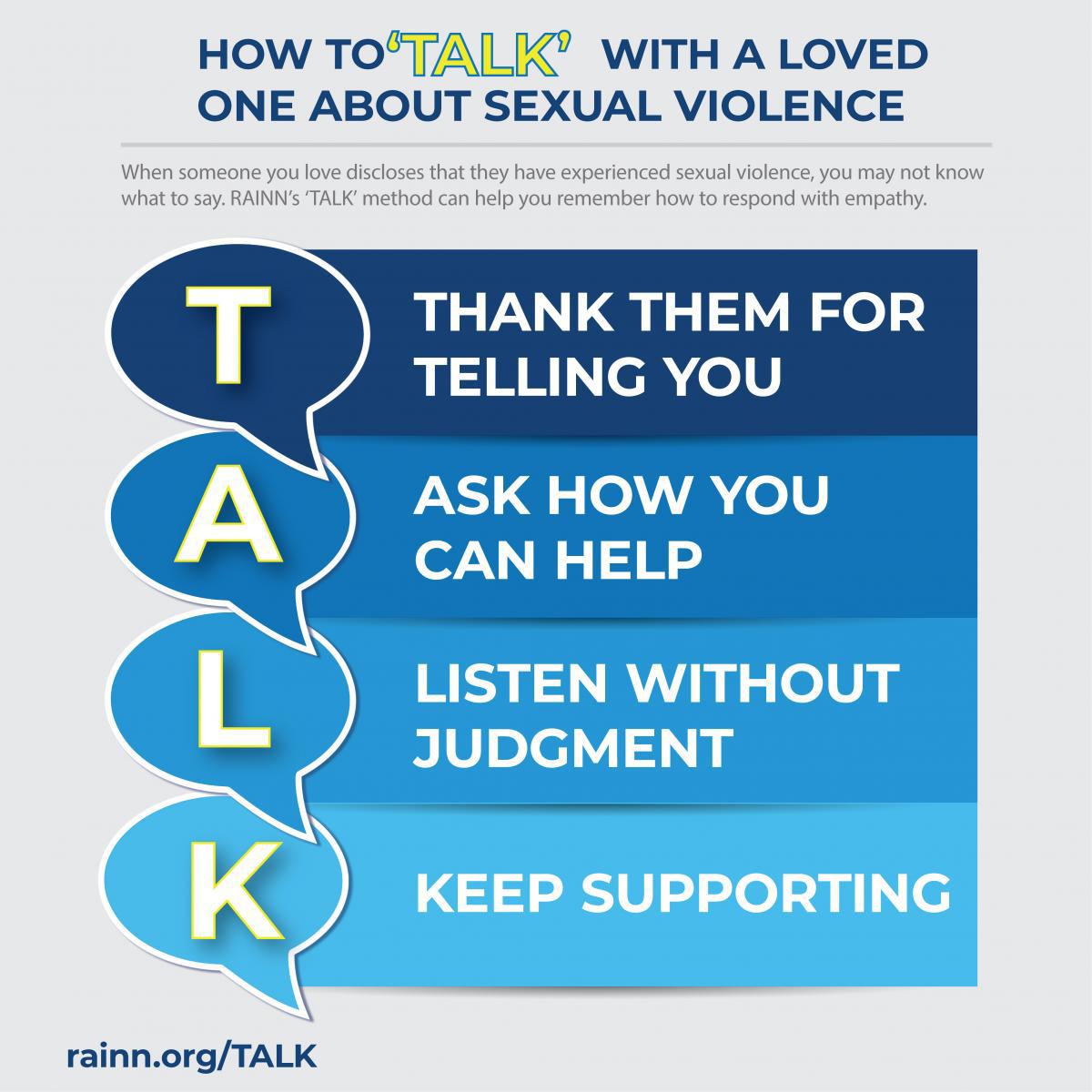Sexual Violence Education
Supporting Survivors of Sexual Violence
If you know someone who has experienced a sexual assault and is in need of support, please consider reviewing the information provided by RAINN, a national resource for survivors of sexual violence, listed below and available at the provided links. The following are tips and a toolkit that the organization has developed and published for support persons looking for information on how to support a loved one who has experienced an assault and is working to heal and cope with what happened to them. Having support after an assault can be incredibly important to the mental well-being and safety of an individual. We acknowledge that crimes of sexual violence impact many individuals within a community and a support system, if you are struggling to cope as a support person, please know that resources are available to help you as well as and can be found on our Resources page.
Helpful Links
- How to Support a Loved One: https://www.rainn.org/TALK
- Friends and Family Toolkit for Supporting a Loved One After Sexual Violence: https://www.rainn.org/sites/default/files/Toolkit_0.pdf
- Tips for Talking with Survivors of Sexual Assault: https://www.rainn.org/articles/tips-talking-survivors-sexual-assault
"Most of the time, loved ones of survivors want to do anything they can to help— but aren’t sure what to do. Whether someone you love has disclosed to you already, or you just want to be prepared for the moment someone does, taking the time to proactively learn how to support a survivor as they disclose can make all the difference. When the time comes to support a survivor in your life, remember this important acronym about how to TALK. Learn more from RAINN's Family and Friends Toolkit."
Click Here to Download
Statistics

Prevalence - You Are Not Alone
- 1 in 4 women have been the victim of an attempted or completed rape in their lifetimes.
- Over half of women (54.3%) report experiencing contact sexual violence of some kind in their lifetime.
- 1 in 26 men have experienced an attempted or completed rape in their lifetime.
- Nearly one-third of men (30.7%) report experiencing contact sexual violence of some kind in their lifetime.
- It is estimated that 734,630 people were raped (including threatened, attempted, or completed rape) in the US in 2018.
- 56.1% of female victims of rape reported their perpetrator as being an acquaintance, while 39.3% reported the perpetrator as being an intimate partner.
- 57.3% of male victims of rape reported their perpetrator as being an acquaintance, and 12.5% reported the perpetrator as being by an intimate partner.
- From 2009-2013, Child Protective Service agencies substantiated, or found strong evidence to indicate that, 63,000 children a year were victims of sexual abuse.
Sources: https://www.nsvrc.org/statistics, https://www.rainn.org/statistics/scope-problem
CDC 2016/2017 National Sexual Violence Survey
Reporting
40% of rapes and sexual assaults were reported to police in 2017, but only about 25% were reported to police in 2018. Only about 310 out of every 1,000 sexual assaults are reported to police. There are a number of reasons that a survivor may choose not to report. You do not need to report your assault to receive support and medical services following an assault. An advocate can provide support throughout the criminal justice process if you choose to engage in the proceedings, they can also explore your reporting options, accompany you when filing a report with law enforcement, attend court hearings with you, and help you write a victim impact statement. Please contact an advocate if you are interested in learning more.
Military and Prisoners
Prisoners
- An estimated 80,6000 inmates each year experience sexual violence while in prison or jail.
Military
- 6,053 military members reported experiencing sexual assault during military service in 2018. The Department of Defense estimates that about 20,500 service members experienced sexual assault that year.
Source: https://www.rainn.org/statistics/victims-sexual-violence
LGBTQ
- 44% of lesbians and 61% of bisexual women experience rape, physical violence, or stalking by an intimate partner, compared to 35% of straight women.
- 26% of gay men and 37% of bisexual men experience rape, physical violence or stalking by an intimate partner, compared to 39% of straight men.
- 46% of bisexual women have been raped, compared to 17% of straight women and 13% of straight men.
- 40% of gay men and 47% of bisexual men have experienced sexual violence other than rape, compared to 21% of straight men.
- Almost half (47%) of transgender people are sexually assaulted at some point in their lifetime.
Source: https://www.hrc.org/resources/sexual-assault-and-the-lgbt-community
BIPOC
Rape
- Multiracial women: 48.0% (1 million women)
- Native women: 43.5% (346,000 women)
- Black women: 29.0% (4.4 million women)
- Hispanic women: 19.7% (3.5 million women)
- Asian or Pacific Islander women: 17.2% (1.2 million women)
- White women: 28.1% (22.8 million women)
Other Sexual Violence
- Multiracial women: 67.3% (1.4 million women)
- Native women: 58.1% (460,000 women)
- Black women: 40.5% (6.2 million women)
- Hispanic women: 34.8% (6.3 million women)
- Asian or Pacific Islander women: 44.2% (3 million women)
- White women: 51.5% (41.9 million women)
Source: National Intimate Partner and Sexual Violence Survey (2016/2017) https://oaesv.org/wp-content/uploads/2021/04/oaesv-sexual-violence-women-of-color.pdf , https://www.cdc.gov/violenceprevention/pdf/nisvs/nisvsReportonSexualViolence.pdf
Common Terms Defined

The lived experiences of a person who is impacted by the trauma of sexual violence is not limited to the following terminology. These definitions are provided to help those who are seeking to better understand what happened to them and to provide them with the language to talk about it. These terms do not decide who you are or what your future will be, only you hold that power.
Sexual violence is not limited to these definitions.
If you are struggling with any of these forms of violence, we are here to help.
The overarching category that refers to all actions of unwanted sexual behaviors in which a person(s) exerts power and control onto another without their freely given consent.
Criminal Justice Process
The following process is a general outline of what you might see in a criminal sexual conduct case. This is provided to give survivors an overview of what one might be able to expect if they decide to make a report to law enforcement and engage in the criminal justice process. However, it is important to note that your case may look differently depending on a number of factors. For more specialized information that is most relevant to you and your situation, please consult with the prosecutor or victim’s rights specialist assigned to your case. A community advocate can also help to answer any questions you may have and coordinate with the prosecutor and victim’s rights specialist on your case.
1.
Report of Criminal Sexual Conduct
When you make a report of a sexual assault to a law enforcement officer or other mandated reporter, the appropriate law enforcement jurisdiction will open an investigation. Jurisdiction is typically determined by where the assault occurred. During the investigation, a detective or police officer will be assigned to your case, they may ask to speak with you again about your initial report to ask follow-up questions about possible witnesses or details that may come back to your memory after some time. Part of the evidence discovery process by law enforcement may include collecting DNA evidence. This can be accomplished through a SANE examination, commonly known as a “rape kit”. These exams include collecting a medical history, any details of the assault you wish to disclose, a physical head-to-toe examination for injury, and cotton swabs taken by the trained forensic nurse in areas where DNA from the assailant may be present within 5 days of the assault. Please note, having a SANE exam is not required and will not prevent you from reporting an assault if you are beyond the window of 5 days. Similarly, you can still seek medical attention past the 5 day window, which is predominantly for evidence collection, as DNA is unlikely to last past the 5 days. If you would like more information on the SANE process, please see the SANE Exam Section or speak with an advocate.
2.
Warrant Request and Authorization
After the detective/officer completes the investigation, they will send their report to the county prosecuting attorney’s office. The prosecutor may ask to speak with you about the report, this is normal and you can ask that an advocate accompany you if you would like. The prosecutor represents the People of the State of Michigan, as sexual assault is considered a crime against the citizens of Michigan. The prosecutor will make the decision about whether or not there is enough evidence present to meet the legal standards required to prosecute the case. If the case is able to be prosecuted, there will be an arrest warrant issued or a notice to appear in court for the defendant.
3.
Arraignment in District Court
After the assailant has been arrested, they will be brought in front of a judge in the district court where they will be read the charges against them and given the opportunity to plead guilty or not guilty. Bond (or bail) will be set at this time, which is the amount of money that the judge determines would need to be paid by the assailant to avoid detention while awaiting trial. The judge will consider the assailants' risk to public safety and likelihood of showing up for court again in setting the amount of bond. Even if they aren’t forced to stay in jail while waiting for trial, the judge may order conditions of the bond and police may arrest the assailant if they violate any conditions. A no-contact order is issued while the proceedings are active, where the assailant is prohibited from making contact or attempting to make contact with the survivor/victim.
4.
Preliminary Exam Conference
This is typically a meeting between both sides of the legal council, the prosecutor and the defense attorney. During this meeting, which can occur in person, in the courtroom, over a phone call or an email, the attorneys determine if the court will go to trial or if the prosecutor decides that a plea bargain will be offered, it will be offered at this time. They may also discuss scheduling or waiving the preliminary exam. The prosecutor and victim rights specialist through the court will notify you if you need to appear. Your community advocate can also assist you in keeping up with the court process and what stage it is at.
5.
Preliminary Exam
This can sometimes be referred to as a probable cause hearing and is held in front of the District Court Judge. The prosecutor will present witnesses to show the judge that there is probable cause to believe that the charged crimes were committed and that the defendant was the one who committed them. The burden of proof that the prosecutor must meet for this exam is much less than at a trial, so the prosecutor is less likely to call all potential witnesses to testify. Generally, the victim, eye witnesses and police witnesses are called to testify at this hearing. The defendant, through their attorney, can also question witnesses and present their own witnesses and evidence. If the judge decides that probable cause is met, then the case is bound over (or sent to) the Circuit Court for trial. If the judge decides that there is not probable cause that the defendant was the one who committed the crimes they were charged with, then the judge can send the case over to Circuit Court on different charges, they can reduce the charges to a misdemeanor for trial in District Court, or they can dismiss the charges. Defendants may waive their right to a Preliminary Examination, in which case they will go straight to Circuit Court.
6.
Circuit Court Arraignment
Once the case is sent to the Circuit Court, the defendant is arraigned again to give them formal notice of the charges against them in front of the judge. They will be informed of their constitutional rights and asked to enter a plea to the charge, that being either guilty or not guilty.
7.
Pre-Trial Conference
The Circuit Court may then decide to schedule a meeting with the Assistant Prosecuting Attorney, who is the acting prosecutor on the case, and the defendant’s attorney to determine whether the case will go to trial or be resolved with a plea. The prosecutor tries to take into consideration your thoughts and feelings on what you would like to see happen with the case, however, it is important to remember that they are acting on behalf of the State of Michigan and are limited by certain elements of the legal process, so they are not always able to secure a desired outcome. The prosecutor, victim’s rights specialist and your advocate can help keep you informed on the court case and answer any questions that you may have.
8.
Pre-Trial Proceedings
Various pre-trial issues can at times come up that the Circuit Court Judge may be called on to resolve. Some issues that might be discussed during these proceedings could be if the case is going to continue to a trial or if it will be resolved with a plea deal; if it will be dismissed; or whether evidence will be admissible at trial; etc.
9.
Trial
At a trial, the prosecutor must present evidence to prove the defendant’s guilt beyond a reasonable doubt. The defendant is not required to prove their innocence or to present any evidence, but may challenge the accuracy of the Prosecutor’s evidence through their attorney. Both the defendant and the prosecutor have the right to a trial by a jury. Sometimes, both sides agree to let a Judge listen to the evidence and decide the case without a jury, which is called a “bench trial”. In a jury trial, the jury is the “trier of fact,” and in a bench trial, the judge is. After the evidence has been presented, the judge or jury will determine whether or not the evidence proved that the defendant committed the crime.
The following are the general steps in a jury trial to help you know what to expect:
- Residents of the local county are randomly selected from a Secretary of State list of licensed drivers, and are summoned to the court as potential jurors.
- A blind draw selects twelve people from that group in felony cases and six in District Court misdemeanors.
- Voir Dire: the judge, prosecutor and defense attorney will question the jurors about their backgrounds and beliefs.
- The attorneys are permitted a limited number of “peremptory” challenges to dismiss certain jurors. Or an unlimited number of challenges for a good cause.
- After twelve (or six) acceptable jurors remain, the judge will administer an oath to the jury and will read instructions about the trial process.
- The prosecutor will give an opening statement to outline the People’s case against the defendant and the evidence to the jury.
- The defense may give a similar opening statement or wait until later in the trial.
- The prosecutor calls witnesses, which the defense has the opportunity to cross-examine and ask their own questions.
- The prosecutor will close their proofs.
- The defense may call witnesses and the prosecutor can cross-examine them.
- The defense rests.
- The prosecutor may present a “rebuttal” witness/evidence to challenge evidence presented by the defendant during their proofs.
- The prosecution rests.
- The trial judge will let the defense present “sur-rebuttal” witnesses to respond to the prosecutor’s rebuttal witnesses’ testimony.
- The prosecutor presents their closing summary to the jury.
- The defense attorney presents their closing summary to the jury.
- The prosecutor may present a rebuttal argument to the jury in response to the defense’s closing summary.
- The judge gives the jury detailed legal instructions about the charged crimes and the deliberation process.
- The jury goes into a separate private room to deliberate the facts of the case under the instructions given by the judge and they will return with a verdict.
- The jury will report the verdict to the judge and the rest of the courtroom. Verdicts must be unanimous for criminal cases.
10.
Pre-Sentence Investigation and Report
The court’s probation department prepares a report for the judge that summarizes the crime and the defendant’s personal and criminal backgrounds. The victim may be contacted for a recommendation of what sentence the defendant should be issued. The probation officer concludes the report with their recommended sentence.
11.
Sentencing
More often than not, the sentence that the defendant will be issued if found or plead guilty, will be at the discretion of the judge. The judge will consider the information in the report from the probation officer, additional evidence offered by the parties, comments by the crime victim, and other information relevant to the judge’s sentencing decision. The sentencing guidelines factor in aspects of the defendant’s criminal conduct and their prior record, to determine the minimum jail/prison sentence or an alternative sentence, such as a fine, probation, community service, or a combination of any of the above. The judge may also order the defendant to make restitution to any victims who have suffered financial harm. Restitution is the payment for injury or property loss. You may discuss this further with the prosecutor, victim’s rights specialist, probation officer, or your advocate.
SANE Exam
A SANE Exam is a forensic examination that can be conducted prior to 5 days following a sexual assault. During this exam, a specially trained nurse will take a report of what happened and swab for DNA evidence that will then be stored in a medical kit, they will also assess for injuries, safety planning and any needed preventative medications for sexually transmitted infections. You have the right to decide if you would like to have your kit released to law enforcement to aid in a criminal investigation of the assault, you are not required to release your kit to law enforcement to receive a medical examination. For more information on what you can expect from a SANE exam, please take a look at the following informational material from our partners at Sparrow Hospital Forensic Nursing Program and Michigan State University's Sexual Assault Healthcare Program. SANE exams and forensic nurses are available at these two facilities 24/7 for anyone in the community (must be 18 years or older to receive a SANE exam at the MSU Sexual Assault Healthcare Program, unless enrolled as a student).

MSU Sexual Assault Healthcare Program

Sparrow Hospital Forensic Nursing Program
More Infomation
For more information on sexual violence, please consult with your advocate or visit these national resources:





